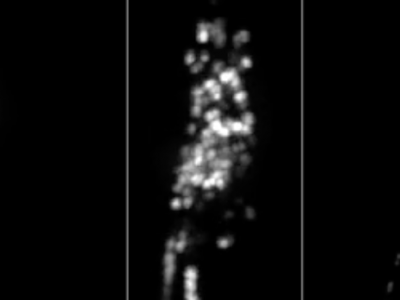behavior
A quantitative understanding of how sensory signals are transformed into motor outputs places useful constraints on brain function and helps reveal the brain's underlying computations. Here we present over 8,000 animal hours of behavior recordings to investigate the nematode C. elegans' response to time-varying mechanosensory signals. We use a high-throughput optogenetic assay, video microscopy and automated behavior quantification.
- Categories:
 722 Views
722 ViewsAdvances in optical neuroimaging techniques now allow neural activity to be recorded with cellular resolution in awake and behaving animals. Brain motion in these recordings pose a unique challenge. The location of individual neurons must be tracked in 3D over time to accurately extract single neuron activity traces. Recordings from small invertebrates like C. elegans are especially challenging because they undergo very large brain motion and deformation during animal movement.
- Categories:
 2754 Views
2754 Views
